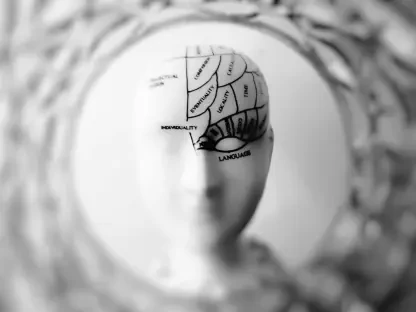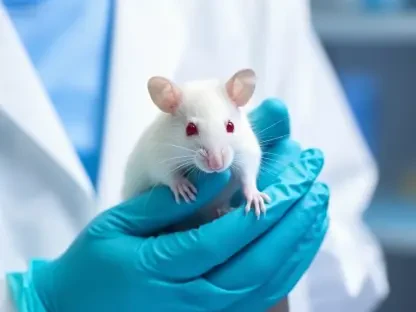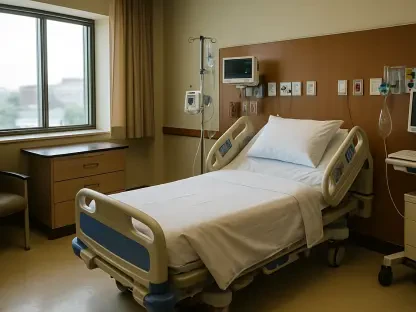In today’s conversation, we’re diving deep into a remarkable innovation in medical technology with expert James Maitland. We’ll be discussing a groundbreaking semiconductor device-based biosensor designed to detect breast cancer cells without traditional lab complications. James is renowned for his work in integrating robotics and IoT in medicine, and he’s here to share insights into this transformative development.
Can you describe the novel semiconductor device-based biosensor developed by the team at NIT Rourkela?
The team at NIT Rourkela has created a semiconductor device-based biosensor that uses a Tunnel Field Effect Transistor, or TFET. Unlike traditional diagnostic procedures that require complex equipment and trained personnel, this biosensor detects breast cancer cells by analyzing their distinct dielectric properties without needing chemical additives. It’s a significant step forward in making diagnosis accessible and practical.
What makes this biosensor different from traditional methods for detecting breast cancer cells?
This biosensor’s uniqueness lies in its simplicity and accuracy. Traditional methods demand sophisticated lab infrastructure and skilled operators, often inaccessible in remote regions. In contrast, the biosensor requires no added chemicals or complicated lab settings, and it functions effectively in identifying cancerous cells by detecting their unique physical properties, like increased water content and density.
How does the TFET device work in detecting cancerous cells without requiring complicated lab procedures or added chemicals?
The TFET device operates by leveraging the dielectric properties of biological samples. Cancerous cells have a different interaction with microwave radiation compared to healthy cells due to their higher water content and density. The TFET, with its specialized cavity, senses changes in electrical signals when these samples are placed in it, distinguishing cancerous cells with high precision.
Could you explain what TCAD simulation is and how it contributed to the development of the TFET device?
TCAD simulation refers to Technology Computer-Aided Design, a tool that facilitated the modeling and testing of semiconductor devices. For the TFET device, TCAD simulation was instrumental in predicting how different biological materials would interact with the semiconductor. This allowed the research team to optimize the TFET’s design and ensure it could reliably detect cancerous cells under various conditions.
What are dielectric properties, and how do they help in distinguishing cancerous cells from healthy ones?
Dielectric properties refer to a material’s ability to store electrical energy in an electric field. Cancerous cells, due to higher water content and density, exhibit different dielectric constants than healthy cells. This variance is key to the biosensor’s ability to identify cancerous cells quickly, as the TFET device reads these differences in electrical signals efficiently.
Why are cancerous cells detected easily by the TFET device based on their dielectric properties?
The increased water content and density of cancerous cells result in a higher dielectric constant compared to healthy cells. The TFET device’s sensitivity allows it to detect these differences swiftly. As a result, distinguishing cancerous cells becomes straightforward, enabling the biosensor to work effectively without the need for additional markers or chemicals.
What role does the small cavity etched into the transistor under the gate area play in the biosensor’s function?
This small cavity is critical as it holds the biological sample in place. By measuring the changes in the electrical signals when the sample interacts with the TFET, the device determines if the sample contains cancerous cells. This design innovation simplifies the sensing mechanism, making it both effective and easy to use.
How does the sensor detect changes in electrical signals based on the properties of biological samples?
The sensor is engineered to be highly sensitive to the dielectric properties of the samples placed in the cavity. As cancerous cells have different dielectric constants than healthy ones, the sensor detects variations in electrical conductance. This change is significant enough to signify the presence of cancerous cells, allowing for accurate diagnostics.
In terms of sensitivity, how does this biosensor compare to existing breast cancer detection technologies?
This biosensor surpasses existing technologies in sensitivity. Its ability to detect slight changes in dielectric properties makes it exceptionally precise. This means it can identify cancerous cells earlier and more reliably than some traditional methods, potentially leading to earlier diagnosis and treatment.
What makes this TFET-based biosensor more affordable than conventional testing methods?
Its affordability derives from its design simplicity and lack of need for expensive reagents or equipment. The TFET device’s reliance on electrical signal detection reduces material costs significantly, making it an economic alternative that doesn’t sacrifice accuracy or accessibility.
Are there any plans for the commercialization of this technology? If so, what steps are being taken in this direction?
Indeed, commercialization is a priority. The team is exploring potential partnerships for the fabrication and scientific validation of the biosensor. These collaborations aim to ensure that the device meets industry standards, facilitating its transition from research to real-world application.
How does the developed biosensor address accessibility issues faced by people in remote areas?
The portable and straightforward design of the biosensor addresses accessibility barriers effectively. By eliminating the need for specialized facilities, it extends diagnostic capabilities to regions lacking adequate medical infrastructure, allowing timely and efficient breast cancer screenings.
What potential collaborations are being explored for the fabrication and scientific validation of this technology?
The research team is actively seeking collaborations with industry experts and academic institutions. These partnerships aim to refine the biosensor’s design and ensure it withstands rigorous real-world testing. Such collaborations are crucial for obtaining certifications and scaling production for widespread use.
In what ways could this biosensor help in early breast cancer detection in clinics, mobile testing units, or home settings?
By bringing the test closer to the patient, whether in clinics, mobile units, or homes, the biosensor facilitates early detection, which is crucial for effective treatment. Its portability and ease of use mean that it could be administered broadly, catching potential issues before they become severe.
Could you elaborate on the challenges faced during the COVID-19 pandemic regarding cancer screenings and how this new technology could mitigate such issues in the future?
The pandemic severely disrupted routine screenings, delaying diagnoses and treatments. This biosensor presents a solution by decentralizing diagnostic procedures, reducing reliance on constrained hospital resources. In future crises, it could maintain continuity in cancer care, ensuring early detection despite logistical challenges.
What is your forecast for the adoption and impact of this biosensor technology?
This biosensor promises to revolutionize early cancer detection. As awareness grows and validation confirms its efficacy, I anticipate it becoming a staple in healthcare settings worldwide—improving accessibility and outcomes significantly. Its impact will likely extend beyond breast cancer, inspiring similar advancements in diagnosing other conditions.









